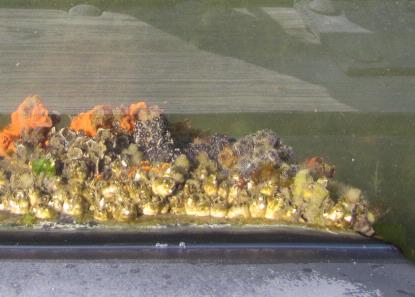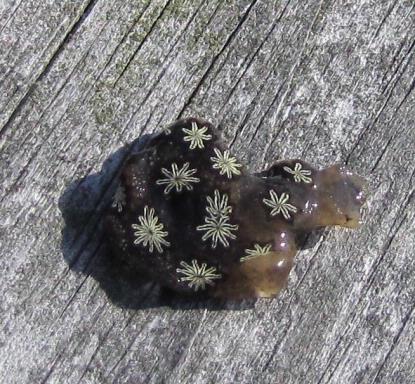This was before my time, but I’m told that my mother’s family spent a part of the summer on a salt water inlet in Rudailand. Oddly, my mother was an avid water skier and trusted her father to drag her about the water skittering around blind corners. These days she gets nervous when people drive over the speed limit in movies, but at some point in the past she must have been a bit of a thrill seeker, because she used to dismount from her skis directly onto the dock at high speeds. Not surprisingly this didn’t always work well and at least once she was flung underneath the dock skis and all. By the time she had crawled to shore they had already sold off her bedroom furniture.
The story is scary enough until you realize what was likely under that dock. Hard surfaces exposed to salt water quickly get encrusted with all sorts of organisms. I’ve recently learned that these are called “fouling organisms.” I suppose if given a voice most organisms might make the argument that humans are the predominant fouling organisms. But they don’t speak our language, so they get to foul our stuff not the other way around. It’s sort of a version of the George Carlin line: “how come other people’s stuff is shit, and your shit is stuff?”

As I lay on this very same dock a few days ago I took a closer look at some of these fouling organisms, or dock weeds. The pests we get in a field are quite varied: mammals, weeds, arthropods (mostly insects), fungi, bacteria, nematodes, and mollusks (snails and slugs). Dock weeds are even more diverse. I don’t think there were any fungi, and most marine mammals are a bit large to be considered “fouling organisms.” I do enjoy the idea of a persistent Walrus infestation on a dock. The organisms included all sorts of segmented and unsegmented worms, crustaceans (barnacles), isopods (like pill bugs), algae, sponges, sea squirts, bryozoa and tunicates. Before looking at these fouling organisms closely, I’d never really given them much thought, so I tried to identify just one beautiful one.

The image shows a star tunicate, Botryllus schlosseri. More correctly it shows a colony of zooids. This is the adult form, but the immature “tadpole” phase looks entirely different; as one might assume from its name, it looks like a tadpole. As a youth tunicates have a notochord, kind of a simple spinal cord. They are among the earliest chordates — the lineage of animals that eventually gave rise to mammals and humans. As adults, the organisms live as a colony in a matrix called a “test,” it feels sort of rubbery and can be quite large. The adult form lacks most chordate features and just sits on the duck sucking in food through a siphon. Sounds kind of nice. Give me a cooler full of beverages and a fishing rod and I’ll go ahead and make like a tunicate.Sounds a lot better than scraping past them after my father has flung me from some water skis.


